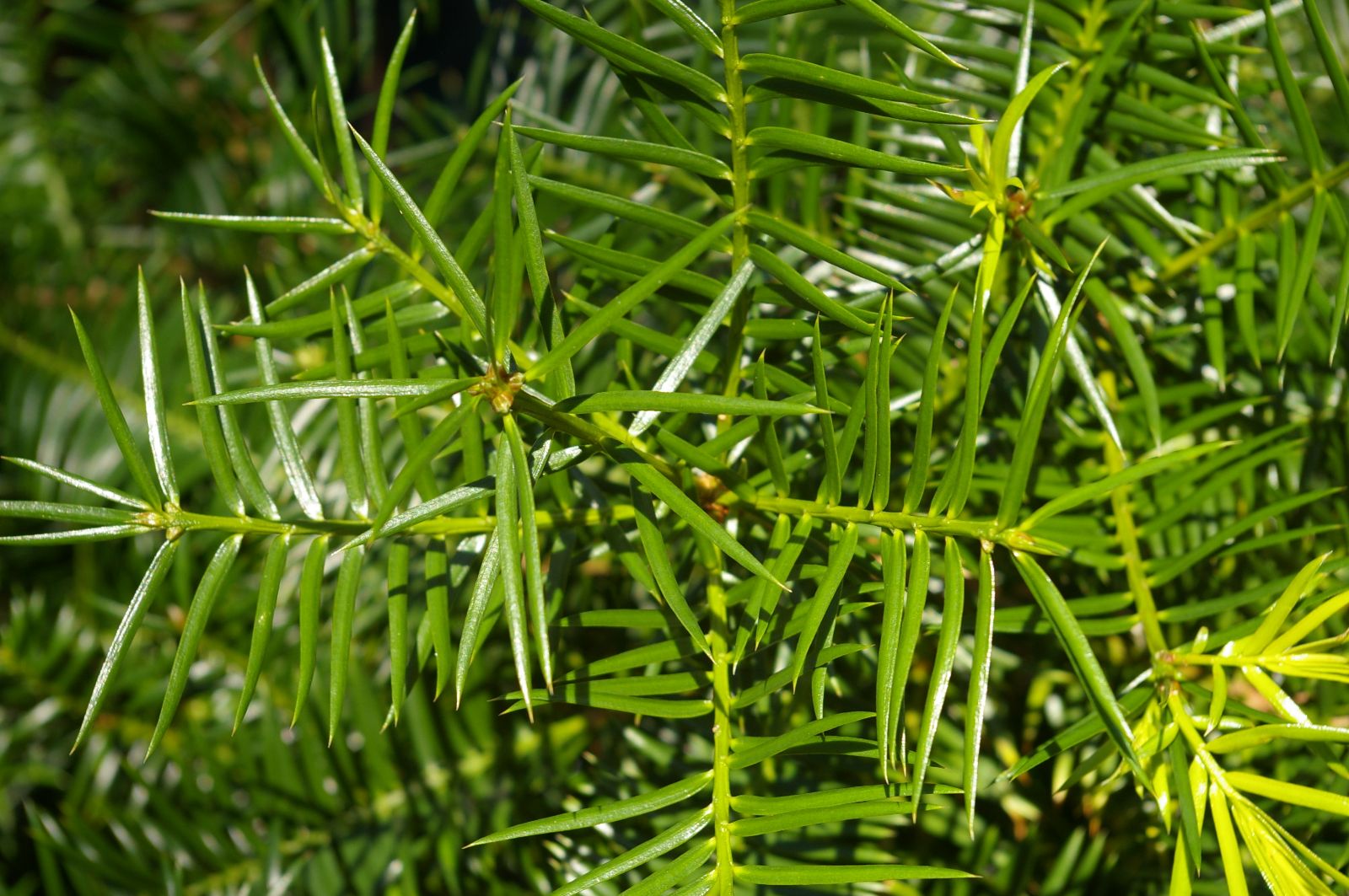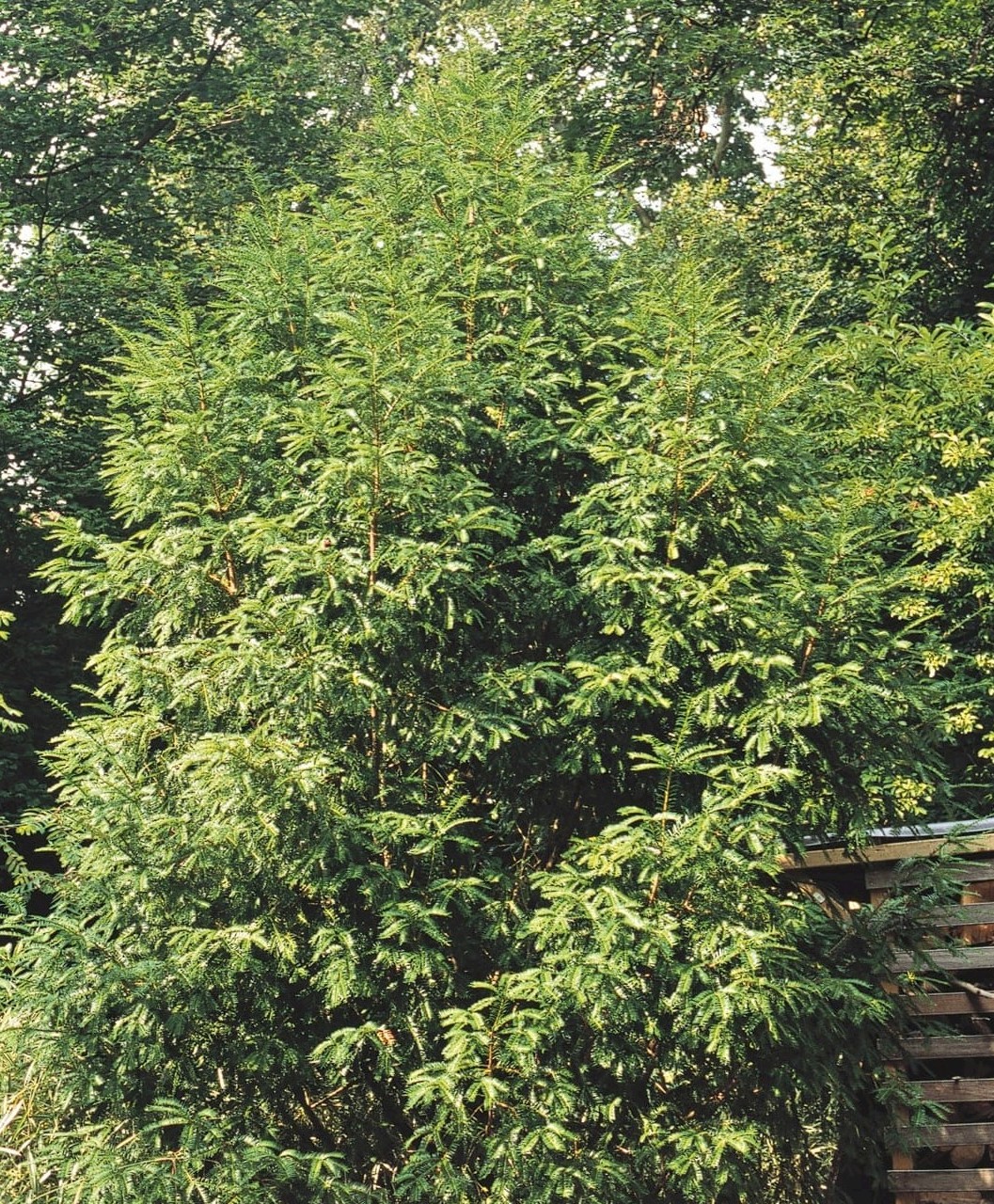Torreya grandis
Credits
Article from New Trees by John Grimshaw & Ross Bayton
Recommended citation
'Torreya grandis' from the website Trees and Shrubs Online (treesandshrubsonline.
Genus
Infraspecifics
Other taxa in genus
Torreya grandis was described by Bean (B612, S518) and Krüssmann (K312). Farjon (2001) recognised four varieties within T. grandis – var. grandis, var. fargesii (Franch.) Silba, var. jiulongshanensis Z.Y. Li, Z.C. Tang & N. Kang and var. yunnanensis (W.C. Cheng & L.K. Fu) Silba – though only var. grandis appears to be established in cultivation. Var. jiulongshanensis and var. yunnanensis are both narrow-range endemics. Flora of China (Fu et al. 1999d) uses a different taxonomy, recognising two species (T. grandis and T. fargesii), each with two varieties.
var. fargesii (Franch.) Silba
Synonyms
T. fargesii Franch.
Var. fargesii differs from var. grandis in having two longitudinal grooves on the upper leaf surface (absent in var. grandis). Also, in var. fargesii the midvein on the lower surface is narrower than the marginal bands (the section of leaf outside the stomatal bands), while in var. grandis the midvein and marginal bands are of approximately similar size. Fu et al. 1999d. Distribution CHINA: possibly south Anhui, west Hubei, northwest Hunan, Jiangxi, south Shaanxi, Sichuan, northwest Yunnan. Habitat Coniferous, mixed and broadleaved forests between 1000 and 3400 m asl. USDA Hardiness Zone 7–8. Conservation status Vulnerable. Illustration Fu et al. 1999d.
Torreya grandis var. fargesii is curiously unknown in cultivation. Arrowhead Alpines (2000–2008) of Fowlerville, Mississippi sell a plant under the name T. yunnanensis ‘Rock’, but mention that it probably belongs to T. grandis var. fargesii. The implication on their website is that it originated as a collection made by Joseph Rock.
var. grandis
Synonyms
T. grandis var. dielsii Hu (var. 'dickii' of Krüssmann 1985b)
T. grandis var. merrillii Hu
T. grandis var. sargentii Hu
Shrub or tree to 25 m, 0.5(–2) m dbh. Bark yellowish grey or greyish brown with longitudinal fissures. Leafy branchlets oblong to obovate in outline, 4–13 × 2.5–7.5 cm, branchlet itself glabrous, green, becoming yellowish green, light brownish yellow or pale brown with time. Leaves (0.7–)1.1–2.5 (–4.5) × 0.2–0.4 cm, linear to lanceolate, usually straight, upper surface glossy green, lower surface with prominent midrib and stomatal bands, apex cuspidate, margins flat or very slightly revolute; petiole absent or to 0.1 cm. Male cones columnar to ovoid, 0.5–0.8 cm long. Seed ellipsoid to ovoid, 2–4.5 × 1.2–2.5 cm; aril pale green to purplish brown with white powdery bloom when ripe. Fu et al. 1999d. Distribution CHINA: south Anhui, north Fujian, northeast Guizhou, west Hunan, south Jiangsu, north Jiangxi, Zhejiang. Habitat Forest between 200 and 1400 m asl. USDA Hardiness Zone 7–8. Conservation status Lower Risk. Illustration Van Gelderen & van Hoey Smith 1996, Fu et al. 1999d; NT865.
Bean (1981b) recorded that Torreya grandis had been introduced by Robert Fortune in 1855, but that only two specimens were known. The one at Borde Hill, West Sussex, recorded by Bean as being 8.8 m in 1968, had shrunk to 6 m when measured in 1995 by Owen Johnson (TROBI), and its record is marked ‘doubtful’. The other specimen, at Kew, was 7.6 m in 1970 and only 8 m in 2001 when re-measured by Johnson. There have been several more recent introductions, however, and some of the plants seen are looking promising. At Arboretum Trompenburg there is a vigorous young tree forming a shapely specimen of about 6 m tall, that was fully clad in foliage to the ground when observed in 2005. This was obtained from M. Decalut of Arboretum Waasland, Belgium in 1994. In several European arboreta there are plants grown from wild-origin seed since 1995, by the German nursery Allerweltsgrün Niehues in Köln, from where it is still available. Collections have also been made by North American expeditions, from which young plants are established in the Arnold Arboretum and elsewhere. At the Morris Arboretum specimens obtained from the Arnold in 1994 are doing well, having reached 1.9 m by 2006, with good straight stems and leaders. The species is currently commercially available from several sources in North America, where it is recommended as being tolerant of heat and shade (Camellia Forest Nursery 2007–2008) as well as preferring moist alkaline soil (Piroche Plants 2000–2005).
The seeds of T. grandis are used for their oil and in medicinal preparations, both in China and the West – including, for example, a herbal remedy recommended for cleansing the colon and expelling ‘unwanted guests’ (Blessed Herbs 2004–2008); the less squeamish might use the term ‘vermifuge’ …


